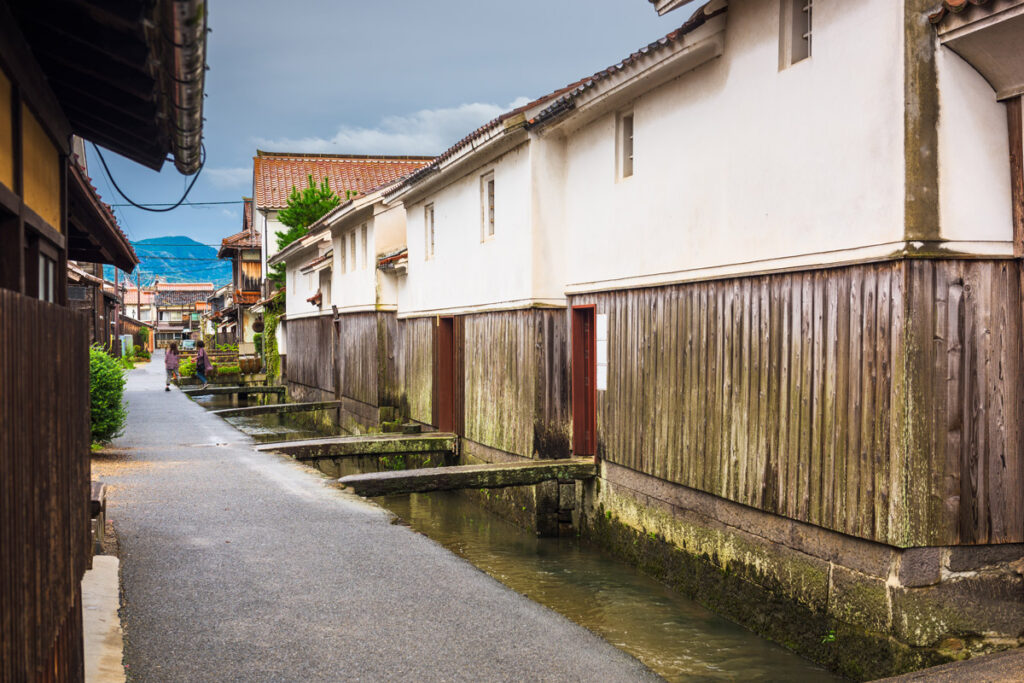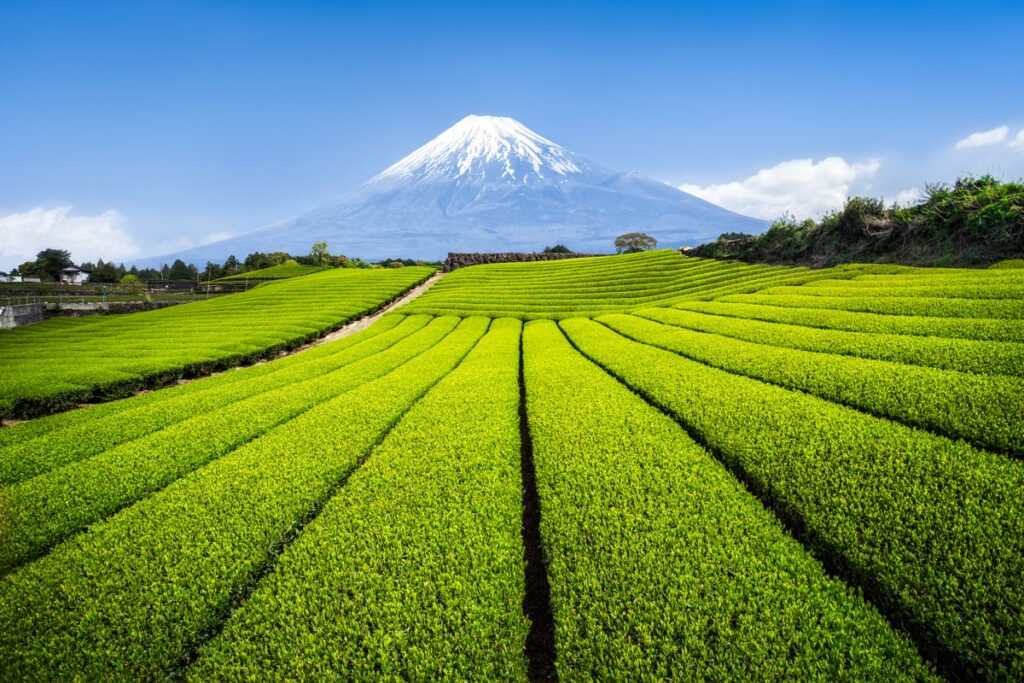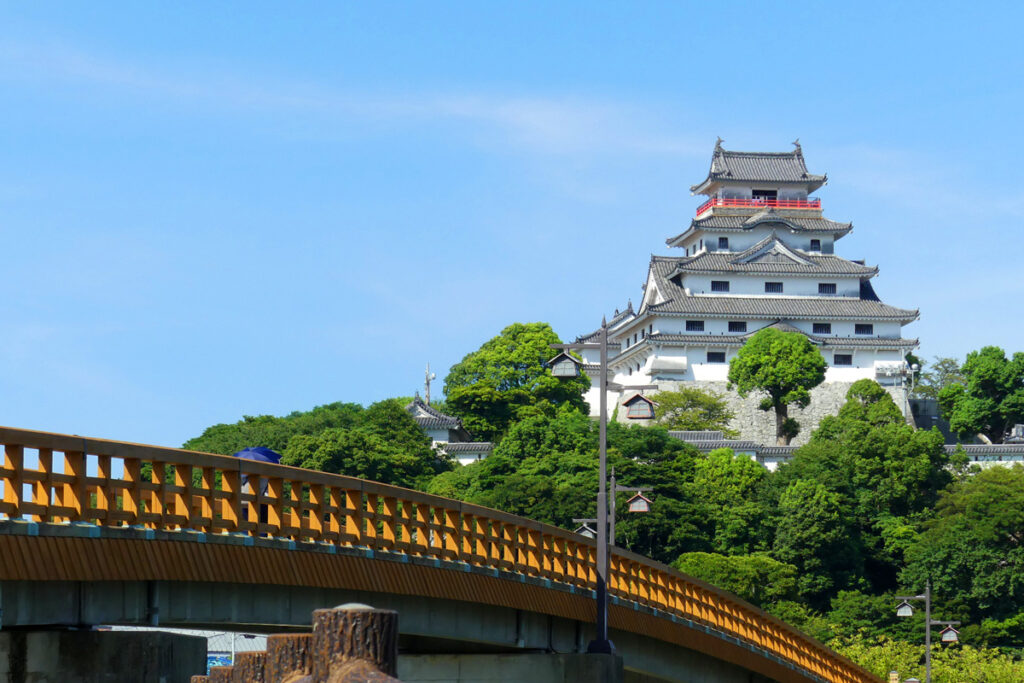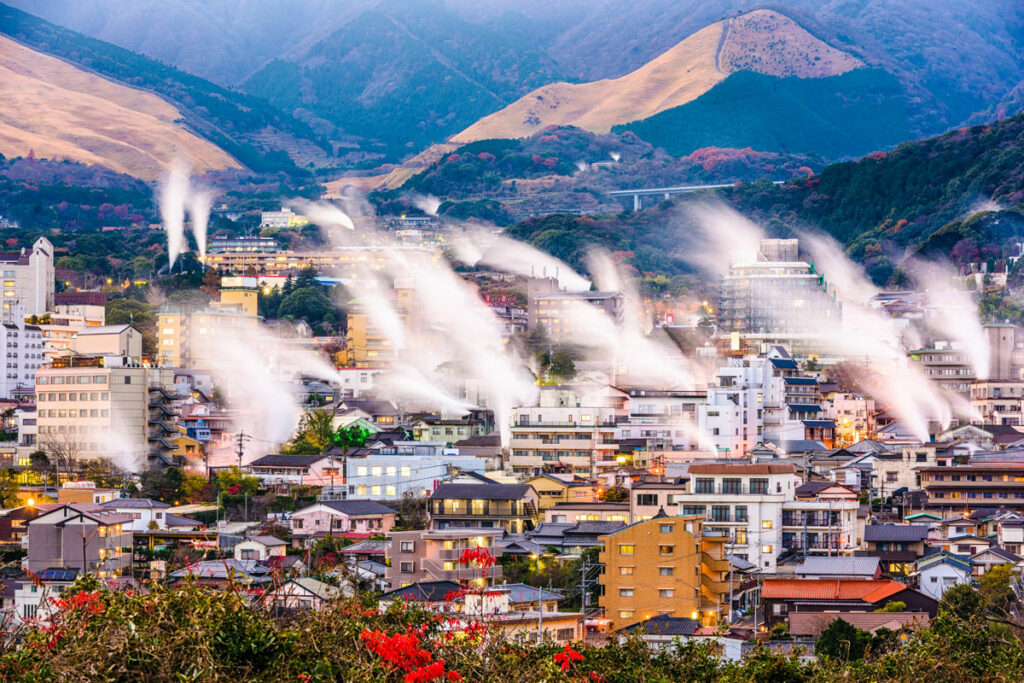Welcome to our ultimate guide on the Top 12 Things to do in Tokyo! If you’re planning a trip to the Land of the Rising Sun, you’re in for an unforgettable experience. Tokyo, the bustling capital of Japan, is a city that beautifully blends tradition and innovation. Nestled in the Kanto region, it’s a gateway to other fascinating cities like Kanagawa (Yokohama), Kyoto, and Osaka.
In this blog post, we’ll take you on a virtual tour of Tokyo’s must-visit attractions. From towering skyscrapers and iconic landmarks to serene gardens and vibrant shopping districts, Tokyo has something for everyone. Whether you’re a history buff, a foodie, a shopaholic, or a nature lover, you’ll find plenty of activities to fill your itinerary.
So, buckle up as we embark on this exciting journey through Tokyo and beyond, exploring the best that these Japanese cities have to offer. Let’s dive in! Check out our Second list of “12 Best Top-Rated Things to do in Tokyo“.
Where to stay: Luxury Accomodation
1. Tokyo Skytree
A tall, iconic tower with observation decks and a shopping complex.

Tokyo Skytree: Dominating the Tokyo skyline, the Tokyo Skytree is a marvel of modern engineering and a testament to Japan’s innovative spirit. Standing at a staggering 634 meters, it holds the title of the tallest tower in the world.
The Skytree is not just a broadcasting and observation tower, it’s a symbol of Tokyo, a beacon that can be seen from almost anywhere in the city. It’s located in the Sumida City Ward, a stone’s throw away from the historic Asakusa district. The tower’s design is a fusion of neofuturistic design and traditional Japanese aesthetics. Its base resembles a tripod, but as you ascend, the structure gradually becomes cylindrical, offering a 360-degree panoramic view of the city.
Visitors can enjoy the breathtaking views from two observation decks located at heights of 350 meters and 450 meters, making them the highest observation decks in Japan. The upper observatory features a spiral, glass-covered skywalk, providing a thrilling experience as you ascend to the highest point.
The Skytree is also equipped with state-of-the-art seismic proofing, including a central shaft made of reinforced concrete and oil dampers that act as shock absorbers during an earthquake. This ensures the tower’s stability and safety, even in a city prone to seismic activity.
In addition to the tower, the Tokyo Skytree Town offers a variety of attractions including a large shopping center, an aquarium, a planetarium, and a 31-story office building. Whether you’re a local resident or a traveler, the Tokyo Skytree offers an unforgettable experience that combines breathtaking views, shopping, dining, and entertainment in one location.
Official Website: https://www.tokyo-skytree.jp/
Address: 1 Chome-1-2 Oshiage, Sumida City, Tokyo 131-0045
To buy your ticket Click here.
Reviews Visit: TripAdvisor
2. Tokyo Tower
A red and white tower that is a symbol of Tokyo, offering views of the city from its observation decks.

Tokyo Tower: An enduring symbol of Japan’s post-war resurgence, Tokyo Tower stands tall and proud in the heart of Tokyo. This iconic landmark, inspired by the Eiffel Tower, was the country’s tallest structure from its completion in 1958 until 2012 when it was surpassed by the Tokyo Skytree.
Located in the Shiba-koen district of Minato, Tokyo Tower measures 333 meters in height, making it a prominent feature of Tokyo’s skyline. It serves as both a communications and observation tower, offering stunning views of the city from its two observation decks. The Main Deck is situated at a height of 150 meters, while the Top Deck reaches a height of 250 meters. On clear days, visitors can even catch a glimpse of Mount Fuji in the distance.
The tower’s vibrant orange and white stripes make it easily recognizable, and it lights up beautifully at night, adding a touch of charm to the city’s nightscape. The tower is repainted every five years, a process that takes a year to complete. At the base of the tower, visitors will find Foot Town, a four-story building that houses museums, restaurants, and shops. It also hosts the Red Tokyo Tower e-sports entertainment complex, offering various interactive games and e-sport activities.
Tokyo Tower is more than just a tourist spot; it’s a testament to Japan’s resilience and economic power. Whether you’re visiting for the breathtaking views or to immerse yourself in its rich history, Tokyo Tower promises a memorable experience.
Official Website: https://www.tokyotower.co.jp/
Address: 4 Chome-2-8 Shibakoen, Minato City, Tokyo 105-0011
To buy your ticket Click Here.
Reviews Visit: TripAdvisor
3. Tokyo Metropolitan Government Building
A skyscraper with observation decks that offer panoramic views of the city.

Tokyo Metropolitan Government Building: Located in the bustling Shinjuku ward, the Tokyo Metropolitan Government Building, also known as Tocho, is a significant landmark in Tokyo. Designed by the renowned architect Kenzo Tange, this imposing structure is the seat of the Tokyo Metropolitan Government, which governs the special wards, cities, towns, and villages that make up the Tokyo Metropolis.
The building is a complex of three structures, with the tallest being the Tokyo Metropolitan Government Building No.1. This 48-story tower splits into two sections at the 33rd floor, each housing an observation deck at a height of 202 meters. These observation decks are free of charge to the public and offer panoramic views of Tokyo’s skyline, including the Tokyo Skytree and Tokyo Tower. On clear days, you can even spot Mount Fuji in the distance.
The building’s design was intended to resemble an integrated circuit, while also evoking the look of a Gothic cathedral. This fusion of modern technology and traditional aesthetics is a testament to Tokyo’s unique blend of the old and the new.
In addition to the observation decks, the building houses offices, the assembly hall of the metropolitan government, and a tourist information center. The center provides information about Tokyo and other tourist destinations across Japan, and occasionally hosts fairs showcasing local products from various regions.
Official Website: https://www.metro.tokyo.lg.jp/
Address: 2 Chome-8-1 Nishishinjuku, Shinjuku City, Tokyo 163-8001
Reviews Visit: TripAdvisor
4. Tokyo Disneyland
A theme park with classic Disney rides and characters.

Tokyo Disneyland: A place where dreams come true, Tokyo Disneyland is a magical kingdom filled with enchantment and wonder. As the first Disney park to be built outside the United States, it opened its doors on April 15, 1983, and has since been a beloved destination for both children and adults.
Located in Urayasu, Chiba Prefecture, near Tokyo, Tokyo Disneyland is a 115-acre theme park that mirrors the layout and attractions of Disneyland in California and Magic Kingdom in Florida. It’s divided into seven themed areas: the World Bazaar, Adventureland, Westernland, Fantasyland, Tomorrowland, Critter Country, and Toontown. Each area offers unique attractions and shows that bring Disney’s magical stories and characters to life.
The World Bazaar, akin to Main Street, U.S.A., serves as the main entry corridor and shopping area. Adventureland, Westernland, and Fantasyland are the traditional Disney lands where you can embark on thrilling adventures, explore the wild frontier, or immerse yourself in fairy tales. Tomorrowland is a realm of the future, while Critter Country and Toontown are mini-lands that offer fun and excitement for the younger guests.
Tokyo Disneyland is also known for its spectacular parades and nighttime entertainment, which add to the magical experience. The park’s accessibility is another plus, being only 15 minutes away by train from Tokyo Station.
Official Website: https://www.tokyodisneyresort.jp/tdl/
Address: 1-1 Maihama, Urayasu, Chiba 279-0031
To buy your ticket Click Here.
Reviews Visit: TripAdvisor
5. Ueno Park
A large park with a number of museums, temple, and a Zoo.

Ueno Park: A sanctuary of nature and culture in the heart of Tokyo, Ueno Park is a must-visit destination for any traveler. Established in 1873, it is one of Japan’s oldest public parks, offering a blend of natural beauty and cultural enrichment.
The park is home to over 8,800 trees, including several varieties of cherry blossoms that bloom spectacularly in spring, attracting millions of visitors for ‘hanami’ or flower viewing parties. But Ueno Park is not just about natural beauty. It is a cultural hub, housing some of Japan’s most prestigious museums, including the Tokyo National Museum, the National Museum of Nature and Science, and the National Museum of Western Art.
One of the park’s key attractions is Ueno Zoo, Japan’s oldest zoological garden, which is home to a diverse range of species, including the much-loved giant pandas. Ueno Park also boasts a rich history. It was originally part of Kaneiji Temple, one of the city’s largest and wealthiest temples during the Edo Period. Remnants of the temple, such as its five-storied pagoda and Toshogu Shrine, are scattered around the park, adding to its historical charm.
Whether you’re a nature lover, a history buff, or an art enthusiast, Ueno Park has something to offer. It’s a place where you can enjoy a leisurely stroll under the cherry blossoms, explore world-class museums, or simply sit by the Shinobazu Pond and watch the world go by. Truly, a visit to Tokyo would not be complete without a day in Ueno Park.
Official Website: https://www.kensetsu.metro.tokyo.lg.jp/
Address: Uenokoen, Taito City, Tokyo 110-0007
Reviews Visit: TripAdvisor
6. Odaiba
An artificial island with shopping, dining, and entertainment options, as well as a beach.

Odaiba: A vibrant island of entertainment and innovation, Odaiba is a must-visit destination in Tokyo. This artificial island, originally built for defensive purposes in the 1850s, has transformed into a bustling hub of leisure and technology.
Odaiba’s unique seaside location gives it a relaxed holiday vibe, contrasting with Tokyo’s bustling core districts. The island is home to numerous technology centers, shopping malls, and entertainment options. One of the most iconic attractions is the life-sized Unicorn Gundam Statue outside DiverCity Tokyo Plaza, which puts on four daily transformation shows.
Shopping enthusiasts can explore Aqua City, DiverCity, or Decks, while anime fans will be thrilled by the Gundam cafe and Gundam Base shop. For those looking for indoor amusement, Tokyo Joypolis and Legoland Discovery Center Tokyo, located in Decks Tokyo Beach, are excellent choices. Adding to the island’s charm is Odaiba’s replica of the famous Statue of Liberty, a popular photo spot with the Rainbow Bridge in the backdrop. The Rainbow Bridge itself is a sight to behold, especially when it’s lit up at night, creating a picturesque view against the Tokyo skyline.
Odaiba is easily accessible via the Yurikamome and Rinkai lines, or by water bus from Hinode Pier and other waterfront locations. Whether you’re a tech enthusiast, a shopping lover, or just looking for a fun day out, Odaiba offers a unique Tokyo experience that shouldn’t be missed.
Website: https://www.gotokyo.org/en/
Address: Odaiba, Tokyo
Reviews Visit: TripAdvisor
7. Asakusa
A Historic neighbourhood with a number of temples, including Senso-ji, as well as shopping and dining options.

Asakusa: A district that beautifully blends the old and the new, Asakusa is a treasure trove of experiences in Tokyo. The heart of Asakusa is Sensoji, Tokyo’s oldest and most visited Buddhist temple. The temple is accessed via Nakamise, a bustling shopping street that has been serving temple visitors with traditional snacks and souvenirs for centuries.
As you walk through the Kaminarimon (Thunder Gate), you’ll be greeted by the lively atmosphere of Nakamise. Here, you can find everything from traditional fans and kimonos to local specialties and unique souvenirs. The street leads to the main grounds of Sensoji Temple, a 7th-century marvel that stands as a testament to Tokyo’s rich history.
Asakusa is also known for its vibrant festivals, with the Sanja Matsuri in May being one of Tokyo’s largest and most celebrated. If you’re visiting in August, don’t miss the annual Asakusa Samba Carnival, a testament to the area’s diverse cultural influences. Beyond the temple and traditional markets, Asakusa offers a variety of culinary delights. From sweet potato treats to grilled fish cakes, your taste buds are in for a treat. For a unique souvenir, head to Kappabashi Kitchenware Town, where you can find professional-level kitchen utensils and surprisingly realistic plastic food models.
Asakusa’s charm extends to the Sumida River. You can take a cruise down the river, offering a different perspective of Tokyo. The district is also a short walk away from the Tokyo Skytree, the tallest tower in the world, adding another layer to your Asakusa adventure.
Official Website: https://www.senso-ji.jp/
Address: 2 Chome-3-1 Asakusa, Taito City, Tokyo 111-0032
Reviews Visit: TripAdvisor
8. Roppongi Hills
A large complex with shopping, dining, and entertainment options, as well as an observation deck.

Roppongi Hills: A city within a city, Roppongi Hills is a vibrant hub of culture, entertainment, and luxury in the heart of Tokyo. The complex is home to offices, apartments, shops, restaurants, a hotel, and even an art museum, making it a symbol of the Japanese IT industry.
The centerpiece of Roppongi Hills is the 238-meter Mori Tower, one of the largest buildings in Tokyo. The tower’s lower floors are filled with restaurants and shops, while the top floors house the Tokyo City View observation deck and the Mori Art Museum, both open to the public. The observation deck is one of Tokyo’s best, offering breathtaking views of the city, especially when the weather permits access to the open-air rooftop deck.
The Mori Art Museum, located on the top floors of the Mori Tower, is a contemporary art museum that focuses on new artistic ideas from around the world. The museum is designed to make art accessible to the general public, rather than being overly obscure or esoteric.
Roppongi Hills also offers a variety of shopping and dining options, with over 200 shops, cafes, and restaurants. The complex also houses a large cinema complex, the headquarters of TV Asahi, and the Mori Garden, a small oasis of greenery built in the style of a traditional Japanese landscape garden. Whether you’re looking to shop, dine, explore art, or simply enjoy the view, Roppongi Hills has something for everyone.
Official Website: https://www.roppongihills.com/
Address: 6 Chome-10-1 Roppongi, Minato City, Tokyo 106-6108
To buy your ticket Click Here.
Reviews Visit: TripAdvisor
9. Shinjuku Gyoen National Garden
A large park in the heart of Tokyo with a variety of gardens and walking paths.

Shinjuku Gyoen National Garden: A serene oasis amidst the bustling city of Tokyo, Shinjuku Gyoen National Garden is a haven for nature lovers. Covering 144 acres, this expansive garden is one of Tokyo’s largest and most popular parks, offering a tranquil escape from the city’s fast-paced lifestyle.
Shinjuku Gyoen beautifully combines three distinct styles: a traditional Japanese landscape garden, a formal French garden, and an English landscape garden. The Japanese garden features large ponds dotted with islands and bridges, surrounded by well-manicured shrubs and trees. The French garden is symmetrically arranged, while the English garden boasts wide, open lawns surrounded by flowering cherry trees.
The garden is particularly famous for its cherry blossom viewing in spring. With over a thousand cherry trees of different varieties, the garden transforms into a stunning canvas of pink, attracting locals and tourists alike for ‘hanami’ or flower viewing parties. But the beauty of Shinjuku Gyoen extends beyond spring. In autumn, the garden is adorned with vibrant hues as the leaves change color, offering another spectacular sight. The garden also houses a greenhouse with a collection of tropical and subtropical plants, adding to its diverse flora.
Originally a feudal lord’s residence during the Edo Period (1603-1867), Shinjuku Gyoen was later converted into an imperial garden before being opened to the public in 1949. Today, it stands as a testament to Tokyo’s rich history and its love for nature.
Official Website: https://www.env.go.jp/
Address: 11 Naitomachi, Shinjuku City, Tokyo 160-0014
Reviews Visit: TripAdvisor
10. Imperial Palace
The primary residence of the Emperor of Japan, located in the heart of Tokyo. The palace grounds are open to the public and offer beautiful gardens and historical buildings.

Imperial Palace: The heart of Tokyo and the residence of Japan’s Imperial Family, the Imperial Palace is a historic site that embodies the country’s rich heritage. Located on the former site of Edo Castle, the palace is surrounded by moats and massive stone walls, creating a stark contrast to the bustling city that surrounds it.
The palace grounds are generally not open to the public, with two exceptions: January 2nd (New Year’s Greeting) and February 23rd (Emperor’s Birthday). On these special occasions, visitors are allowed to enter the inner palace grounds and see the members of the Imperial Family, who make several public appearances on a balcony.
While the palace itself remains a mystery to most, the adjacent Imperial Palace East Gardens are open to the public throughout the year. These beautifully maintained gardens offer a peaceful retreat from the city’s hustle and bustle, with a variety of plants, trees, and historical ruins.
The Imperial Palace is also home to the Nijubashi, two bridges that form an entrance to the inner palace grounds. The stone bridge in front is called Meganebashi (Eyeglass Bridge) due to its looks, and the bridge in the back, formerly a wooden bridge with two levels, is where the name Nijubashi (Double Bridge) is derived.
Guided tours of the palace grounds are offered throughout the year, providing a unique opportunity to learn more about Japan’s imperial history. These tours don’t include entering any buildings but offer a comprehensive overview of the palace grounds and their significance.
Official Website: Imperial Palce
Address: 1-1 Chiyoda, Chiyoda City, Tokyo 100-8111
Reviews Visit: TripAdvisor
11. Shibuya Crossing
A busy intersection in the Shibuya district known for its bustling atmosphere and iconic scramble crossing.

Shibuya Crossing is more than just a symbol of Tokyo’s fast-paced, energetic lifestyle; it’s an experience that encapsulates the city’s vibrant spirit. This iconic intersection, often referred to as the world’s busiest pedestrian crossing, is a spectacle of organized chaos that is as mesmerizing as it is bustling.
Located in the heart of Tokyo, Shibuya Crossing is a convergence of 10 lanes of traffic and five major crosswalks, all surrounded by a modern canyon of neon-colored buildings. At peak times, thousands of pedestrians scramble across the intersection, creating a hypnotic dance of people in motion. This controlled chaos is a testament to the city’s efficient madness, making it a must-see for any visitor to Tokyo.
Shibuya Crossing is not just a pedestrian intersection; it’s a cultural hub. It serves as the center-stage for a Times Square-inspired New Year’s Eve countdown and is the focal point for the wild Halloween celebrations that have grown increasingly famous in recent years. The crossing itself undergoes near daily upgrades, with newer and more impressive video boards constantly vying for the attention of passersby. Despite the constant flurry of activity, traffic at this massive intersection is rarely congested. Emergency vehicles even make their way through rush hour crossings with ease. This is a testament to the efficient design and management of the crossing, further enhancing its reputation as a symbol of Tokyo’s efficient madness.
For the best view of the crossing, consider visiting the Shibuya Excel Hotel Tokyu, which boasts a grand view of the intersection. Alternatively, the Starbucks overlooking the crossing is one of the busiest in the world and offers a great vantage point.
12. Hamarikyu Gardens
A traditional Japanese garden with a large pond and teahouse located on the waterfront in central Tokyo.

Hamarikyu Gardens: A serene oasis amidst the bustling cityscape of Tokyo, Hamarikyu Gardens is a testament to Japan’s rich history and its deep-rooted appreciation for nature. Once a family garden of the powerful Tokugawa Shogunate, this verdant space now serves as a public park, offering locals and tourists alike a tranquil retreat from the city’s hustle and bustle.
The garden’s most distinctive feature is its central pond, Shioiri-no-ike, which is filled with seawater drawn from Tokyo Bay. This unique design allows the pond’s water level to change with the tides, creating a dynamic landscape that shifts throughout the day. Nestled in the heart of this pond is the Nakajima teahouse, a charming spot where visitors can enjoy a relaxing cup of matcha tea and traditional Japanese sweets, all while taking in the picturesque scenery.
Hamarikyu Gardens is also home to a variety of flora that bloom in different seasons, offering a year-round spectacle of natural beauty. From the vibrant peonies and colza in spring to the dazzling reds and yellows of the maple and ginkgo trees in autumn, there’s always something to admire in this lush garden.
Beyond its natural allure, Hamarikyu Gardens also holds historical significance. The garden was completed during the time of the 11th Tokugawa shogun, Tokugawa Ienari, and served as a villa for the imperial household after the Meiji Restoration in 1868. Today, it stands as a testament to Japan’s feudal past and its enduring respect for nature. Whether you’re a history enthusiast, a nature lover, or just looking for a peaceful escape from the city, Hamarikyu Gardens is a must-visit destination in Tokyo.
Official Website: Hamarikyu Gardens
Address: 1-1 Hamarikyuteien, Chuo City, Tokyo 104-0046
Reviews Visit: TripAdvisor
Where to stay in Tokyo for Sightseeing
If you’re wondering where to stay in Tokyo for sightseeing, we’ve got you covered. In this post, we’ll highlight some of the best hotels for sightseeing in Tokyo, ranging from luxury to budget-friendly options.
Luxury Hotels:
The Peninsula Tokyo: This hotel is located in the heart of Tokyo, in the Chiyoda district. It offers a blend of modernity and tradition, with its sophisticated rooms and suites, world-class restaurants, and a luxurious spa. The hotel is just a short walk away from the Imperial Palace, making it a perfect base for sightseeing.
Mandarin Oriental Tokyo: Situated in the Nihonbashi district, this hotel provides a luxurious stay with stunning city views. It offers a variety of dining options, a spa, and is close to Tokyo Station, making it convenient for sightseeing.
Hotel Chinzanso Tokyo: This 5-star luxury hotel is located in Bunkyo, a district of Tokyo rich in history and natural beauty. The hotel is surrounded by a spacious scenic green garden, providing a serene atmosphere. It’s close to Mejiro, making it an excellent choice for sightseeing.
Mid-Range Hotels:
Hotel Gracery Shinjuku: Located in the bustling area of Shinjuku, this hotel offers comfortable rooms with modern amenities. It’s just a short walk away from Shinjuku Station, providing easy access to various sightseeing spots.
Hotel Sunroute Plaza Shinjuku: This hotel is also located in Shinjuku and is known for its comfortable rooms and excellent service. It’s close to Shinjuku Gyoen National Garden, a popular sightseeing spot.
Budget-Hotels:
Capsule Hotel Anshin Oyado Premier Tokyo Shinjuku: This capsule hotel offers a unique and budget-friendly stay. It’s located near Shinjuku Station, making it convenient for sightseeing.
Sakura Hotel Jimbocho: This budget-friendly hotel is located in the Jimbocho area, known for its old bookstores. It’s close to the Imperial Palace, making it a good base for sightseeing.
Frequently Asked Questions (FAQs)
What are the top sightseeing places in Tokyo?
Here is our list of top sightseeing places in Tokyo,
1. Tokyo Skytree
2. Tokyo Disneyland and DisneySea
3. Tokyo Metropolitan Government Building
4. Odaiba
5. Shibuya Crossing
6. Tokyo Tower
7. Roppongi Hills
8. Shinjuku Gyoen National Garden
9. Sensoji Temple
10. Ueno Park
11. Imperial Palace
12. Hamarikyu Gardens
What is the difference between Tokyo Disneyland and DisneySea?
Tokyo Disneyland and DisneySea are two separate theme parks located in Tokyo. Tokyo Disneyland is based on the original Disneyland in California and features classic Disney characters and attractions. DisneySea is a nautical-themed park that features unique attractions and characters not found in other Disney parks.
What is Odaiba and what can visitors do there?
Odaiba is a man-made island in Tokyo Bay that is a popular shopping, dining, and entertainment destination. Visitors can enjoy a variety of activities such as visiting museums, theme parks, shopping centers, and dining at restaurants with views of the Tokyo Bay.
What is the hidden attraction in Tokyo?
There is no one hidden attraction in Tokyo, as the city is full of many amazing and diverse sights and experiences. However, some lesser-known places that are still worth visiting include the Oedo Antique Market, the Nakamise shopping street near Sensoji Temple, and the Hamarikyu Gardens.
What is the number one tourist attraction in Japan?
The number one tourist attraction in Japan is difficult to determine as it varies based on individual interests. However, popular destinations in Japan include Tokyo, Kyoto, and Hiroshima. The most visited tourist attraction in Japan is probably Tokyo Disneyland.
What is the coolest place in Tokyo?
The coolest place in Tokyo is subjective and depends on personal preferences. Some popular places for their unique and innovative atmosphere include the Odaiba district, the Akihabara electronics district, and the Shibuya shopping and entertainment district.
What are the top activities in Tokyo?
The top activities in Tokyo include visiting popular tourist attractions such as Tokyo Disneyland and DisneySea, the Tokyo Skytree, and the Meiji Shrine. Other popular activities include shopping in districts like Shibuya and Harajuku, trying Japanese cuisine, and experiencing the city’s vibrant nightlife.
What are the top things to do near Tokyo?
There are many great destinations near Tokyo that are worth visiting, including Kamakura, Hakone, and Nikko. These places offer a chance to experience traditional Japanese culture and natural beauty.









